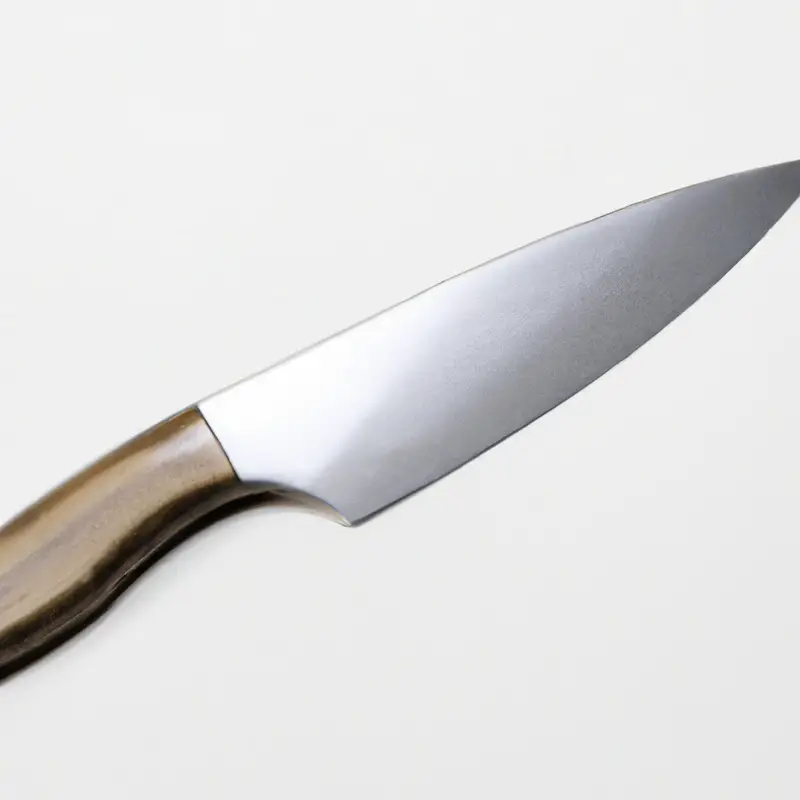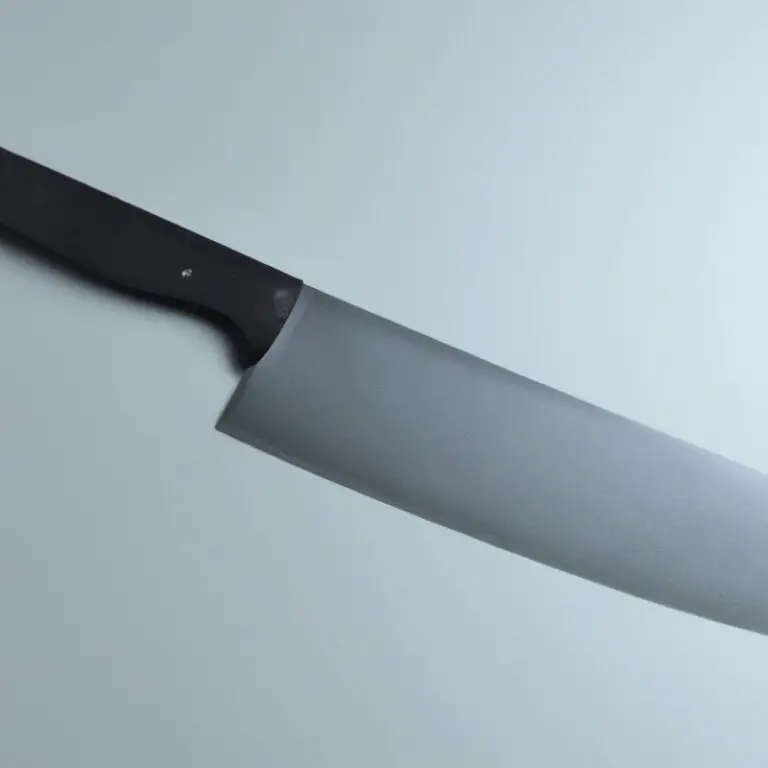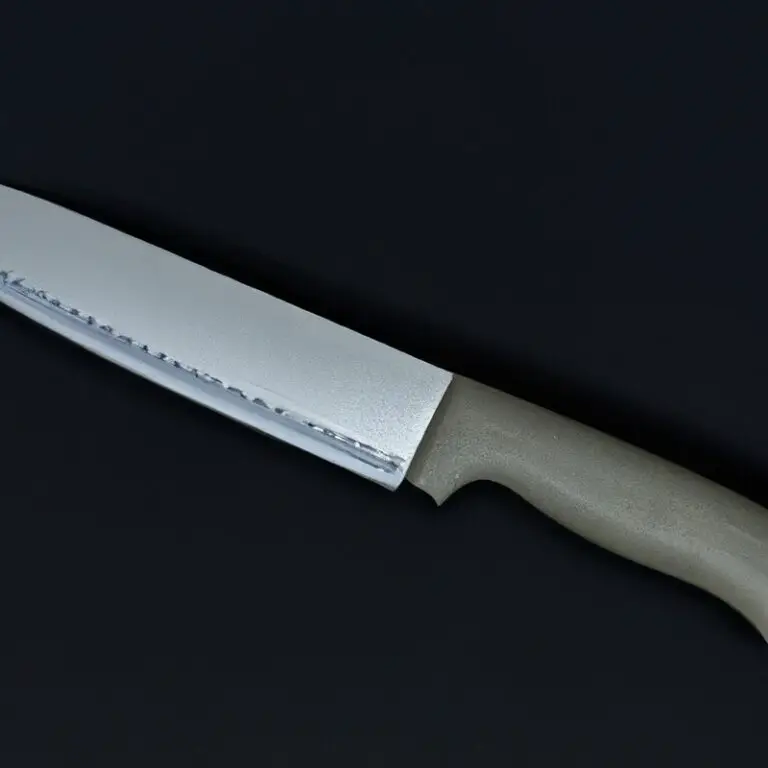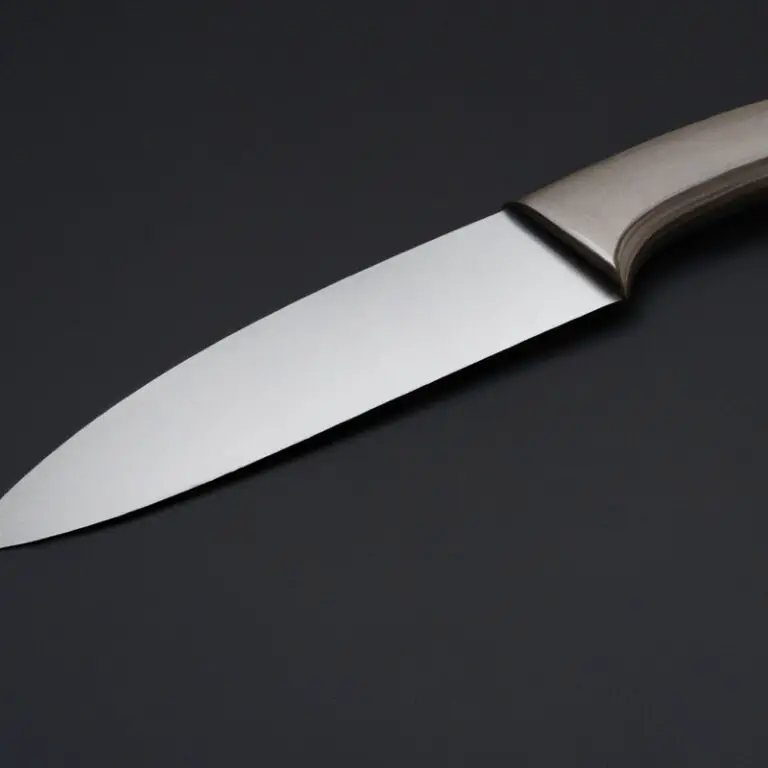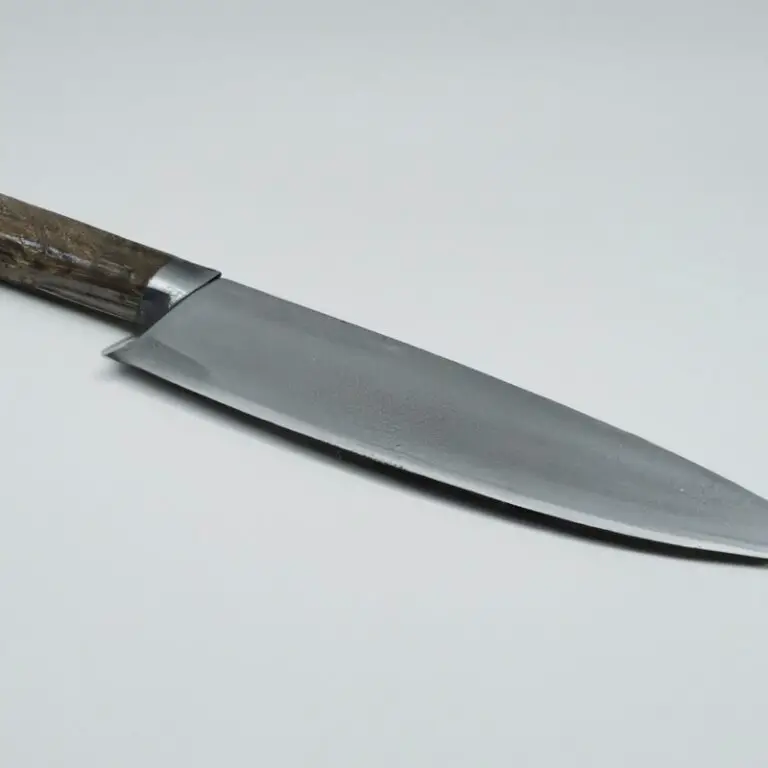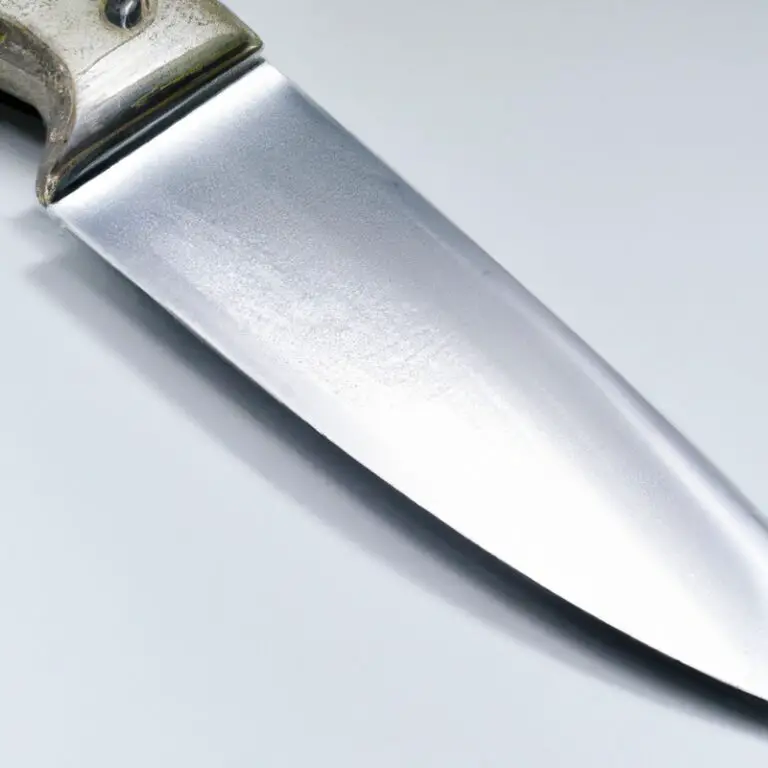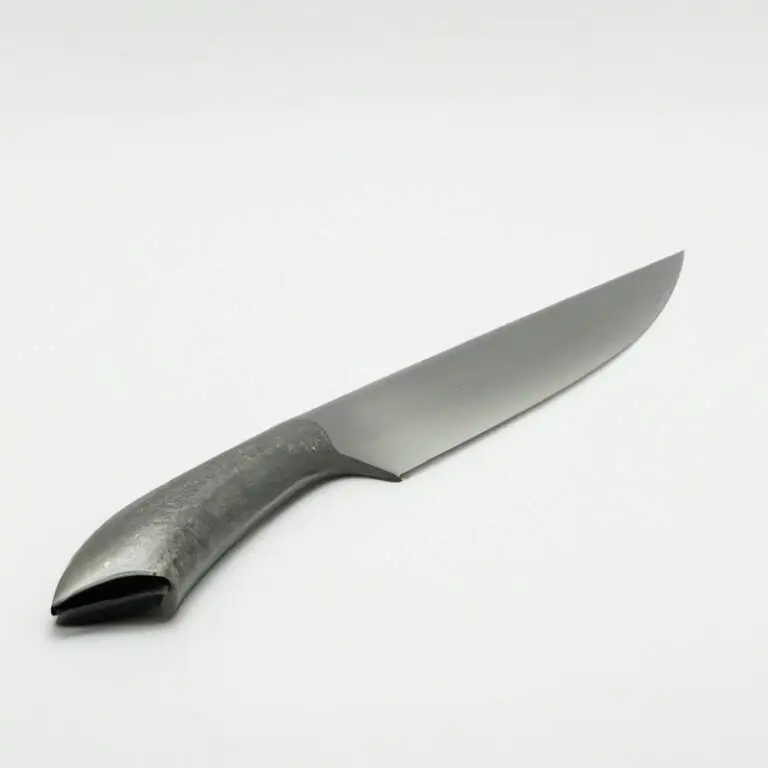How To Safely Handle a Gyuto Knife? – Expert Tips
Key Takeaways:
- Always use proper grip techniques to avoid slipping when handling a Gyuto knife.
- Keep your other hand out of harm’s way by using a cutting board and keeping fingers curled under the hand holding the food.
- Use a sharpening stone regularly to ensure the blade stays razor sharp and reduces the risk of injury.
- Take extra care when washing the Gyuto knife and store it in a safe location to prevent accidental cuts or damage.
Do you love to cook? Then, you know the importance of a sharp and well-balanced Gyuto knife.
But do you know how to handle it safely?
Improper handling can lead to nasty accidents and injuries. In this article, I will guide you through the anatomy of a Gyuto knife, proper grip techniques, safe cutting surfaces, common mistakes to avoid, safety measures to take, hygiene maintenance, and selecting the right Gyuto knife for your needs.
Read on to discover the secrets of safe and efficient cutting with a Gyuto knife while perfecting your culinary skills.
| Step | Instruction |
|---|---|
| 1 | Hold the knife with your dominant hand and grip it firmly near the handle. Keep your fingers wrapped around the handle but do not hold it too tightly. |
| 2 | Position the blade of the knife downwards and away from your body. Keep the sharp edge facing away from you. |
| 3 | When you are cutting with the knife, use a cutting board or a dedicated cutting surface to avoid damaging the blade. Do not cut on hard surfaces like glass or metal. |
| 4 | When you finish using the knife, be sure to wash and dry it immediately to prevent rust and corrosion. Store it in a knife block or a sheath to prevent it from accidentally cutting you or others. |
Understanding the anatomy of a Gyuto knife: the blade, handle, and balance
The anatomy of a Gyuto knife is divided into three parts: the blade, handle, and balance. The blade is typically long and narrow, making it ideal for precise cuts.
The handle is designed to fit comfortably in the user’s hand, allowing for a secure grip.
The balance of a Gyuto knife is usually centered, which helps to provide accuracy and control during cutting tasks. Understanding the anatomy of a Gyuto knife is essential to ensure safe and efficient use.
Factors such as blade length, weight, and material should be considered when selecting the right Gyuto knife for your needs.
Importance of keeping the blade sharp for safe handling: honing and sharpening techniques
Keeping the blade sharp on a Gyuto knife is crucial for safe handling in the kitchen. A dull blade can slip and cause accidents, while a sharp blade cuts effortlessly and is more predictable in its movements.
Honing and sharpening techniques, such as using a sharpening stone or honing steel, should be practiced regularly to maintain the blade’s sharpness.
Honing will help maintain the blade’s sharpness, while sharpening will restore it when it becomes dull. Remember to always follow the manufacturer’s instructions and use caution when handling the sharpening tools.
By keeping the blade sharp, you will ensure a safer and smoother cutting experience when using a Gyuto knife.
Proper grip techniques for safe handling: pinch grip and handle grip
Proper grip techniques are crucial when it comes to the safe handling of a Gyuto knife. Two popular grips are the pinch grip and handle grip.
The pinch grip involves holding the blade between the thumb and index finger, while the remaining fingers grasp the handle.
This grip provides better control and precision when making cuts, especially for fine or delicate work. The handle grip involves holding the handle firmly with all fingers, including the thumb, wrapped around the handle.
This grip provides more stability when cutting tougher or thicker materials.
It is important to choose a grip that feels comfortable and secure for you. Practice both grips to see which one works best for specific cutting tasks.
Regardless of the grip, it is crucial to maintain a firm grip, avoiding loose or shaky movements, and to keep your fingers behind the blade to prevent accidental cuts.
By utilizing the proper grip techniques, you can work safely and effectively with your Gyuto knife.
Tips for holding and maneuvering the Gyuto knife while cutting: rock and slice techniques
When it comes to holding and maneuvering a Gyuto knife while cutting, there are two techniques that professionals recommend: the rock and slice methods. These techniques allow for precision and control while minimizing the risk of injury.
The rock technique involves gliding the blade back and forth in a rocking motion while keeping the tip of the knife in contact with the cutting board.
This method is ideal for slicing and mincing vegetables, herbs, and meats. On the other hand, the slice technique involves pushing the blade forward while applying gentle downward pressure.
This method is best for cutting thin slices of meat, fish, and other delicate ingredients.
To execute these techniques correctly, be sure to maintain a firm grip on the handle and keep your fingers away from the blade. Also, make sure to use the appropriate amount of pressure and apply it evenly across the blade.
Remember, practice makes perfect.
Take time to get comfortable with these techniques before attempting to cut more advanced ingredients or dishes.
Safe cutting surfaces: choosing the right cutting board and avoiding hard or unstable surfaces
When it comes to safe handling of a Gyuto knife, choosing the right cutting board is as crucial as keeping the blade sharp and using proper grip techniques. A cutting board made of softwood or plastic is a better option than a hard surface as it reduces the wear and tear on the knife’s edge.
Unstable surfaces like a slippery countertop or an uneven board can also cause accidents while cutting, and it’s important to ensure that the cutting surface is stable and fixed in place.
It’s advisable to have multiple cutting boards dedicated to different foods to avoid cross-contamination. Additionally, cleaning and sanitizing the cutting board after each use will prevent the growth of harmful bacteria that can affect the quality of the food.
By carefully selecting the right cutting surface and taking necessary measures to maintain hygiene, you can avoid accidents and enhance the longevity of your Gyuto knife.
Avoiding common mistakes when handling a Gyuto knife: cutting towards yourself, using too much force, and improper storage
To ensure safe handling of a Gyuto knife, it is important to avoid common mistakes such as cutting towards yourself, using too much force, and improper storage. Always cut away from your body, with the blade facing away from you, to prevent injury.
Avoid applying excessive force, as this can cause the knife to slip and cut you.
Proper storage is also crucial. Keep the knife in a designated spot, away from other sharp utensils, and use a blade cover or sheath when storing it in a drawer.
Always follow these guidelines to ensure your safety and the longevity of your Gyuto knife.
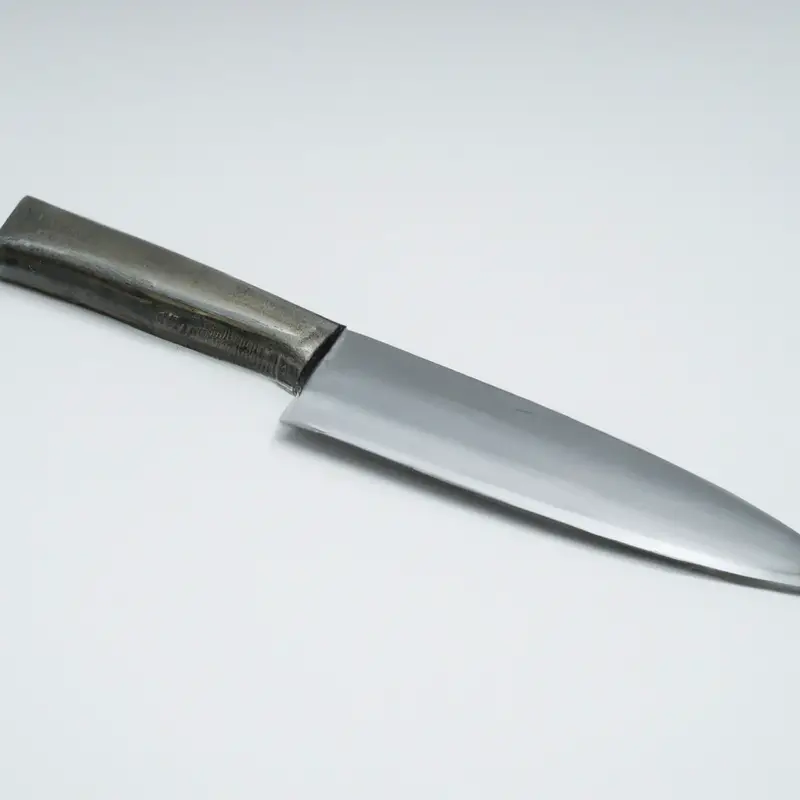
Safety measures to avoid accidents in the kitchen: keeping the knife away from the edge of the counter, storing it safely, and using a knife guard
To ensure safe handling of a Gyuto knife, it’s important to follow some crucial safety measures. First, always keep the knife away from the edge of the counter to prevent accidental falls.
Second, store the knife safely in a designated knife block or sheath to prevent contact with other kitchen tools and avoid damage to the blade.
Finally, use a knife guard when transporting the knife to avoid accidentally injuring yourself or others. By following these safety measures, you’ll be able to prevent accidents and maintain a safe kitchen environment.
Maintaining hygiene when handling a Gyuto knife: cleaning and sanitizing the blade, handle, and cutting board
To maintain hygiene when handling a Gyuto knife, it is crucial to clean and sanitize the blade, handle, and cutting board after every use. Start by wiping the blade with a damp cloth to remove any debris or residue.
Never soak the blade in water or put it in the dishwasher, as it can damage the blade’s edge.
Use hot, soapy water to clean the handle of the knife, focusing on any grooves or crevices where bacteria can accumulate. Rinse it thoroughly and dry it with a clean towel.
The cutting board should also be cleaned after each use.
Use a solution of water and vinegar or a mild detergent to clean it thoroughly. Rinse it with hot water and dry it with a clean towel.
To sanitize the blade, handle, and cutting board, use a solution of water and bleach or a commercial sanitizer.
Follow the instructions carefully and allow it to dry completely before use. Regularly check for any signs of wear or damage to the blade, handle, and cutting board.
If you notice any cracks, chips, or discoloration, replace them immediately.
By following these cleaning and sanitizing practices, you can ensure that your Gyuto knife remains safe, hygienic, and long-lasting.
Considerations for selecting the right Gyuto knife based on your needs: blade length, weight, and material
When selecting a Gyuto knife, it’s important to consider your personal needs in terms of blade length, weight, and material. Blade length will determine the knife’s versatility, with shorter blades (around 8 inches) being better suited for small and precise cuts while longer blades (12 inches or more) are ideal for larger or thicker items.
The weight of the knife affects its balance, with heavier knives providing more force and durability but can also be harder to control.
Lighter knives are easier to maneuver but may require more pressure to cut through tougher materials. The material of the blade also plays a significant role in its performance.
Japanese knives are traditionally made of harder, more brittle steel that holds a sharper edge but may be more prone to chipping or cracking.
Western-style knives are typically made of softer steel that is easier to sharpen but may lose its edge quickly. Ultimately, it’s important to choose a blade material that fits your needs and preferences in terms of sharpness, durability, and maintenance.
In summary, the considerations for selecting the right Gyuto knife based on your needs include blade length, weight, and material.
By understanding how these factors impact the performance of the knife, you can choose a blade that works best for your needs and ensure safe handling in the kitchen.
Using a Gyuto knife for various cutting tasks: vegetables, meats, and fish
Using a Gyuto knife, you can easily cut different types of food items, including vegetables, meats, and fish. The sharp and slender blade of a Gyuto knife allows for precise cuts and effortless slicing.
To cut vegetables, use a rocking motion to slice through them easily.
For meats, use a slicing technique to cut against the grain smoothly. For fish, use a slicing technique to cut through the skin and bones easily.
Remember to keep the blade sharp, use a proper grip, and cut on a stable surface to ensure safety.
With practice and careful handling, a Gyuto knife can become your go-to tool for various cutting tasks in the kitchen.
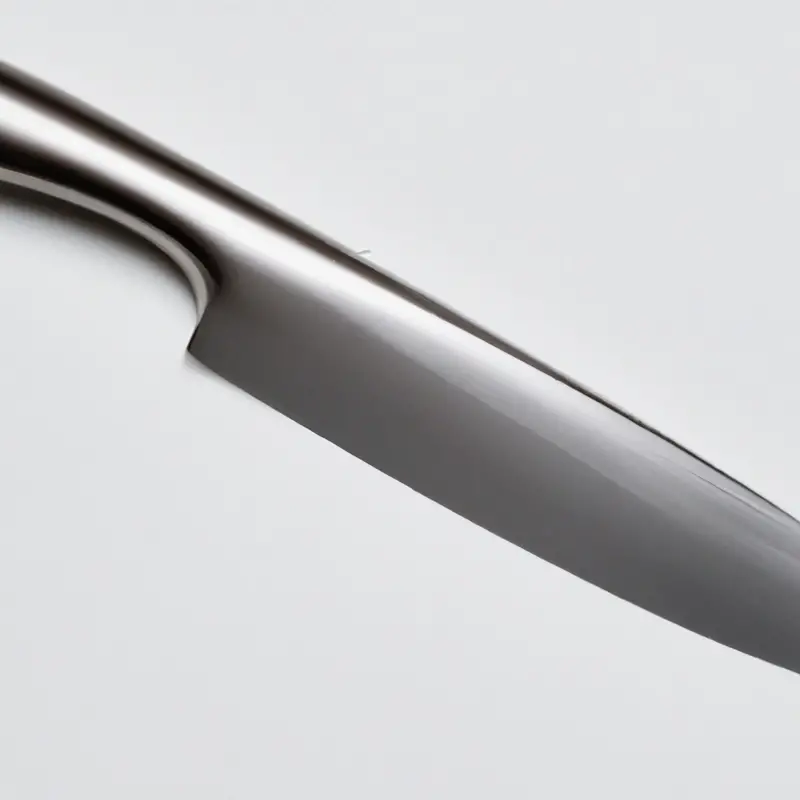
Final Verdict
Safe handling of a Gyuto knife is crucial for any chef or home cook. Understanding the anatomy of the knife, keeping the blade sharp, and proper grip techniques are essential to avoid accidents in the kitchen.
Remember to always use the correct cutting surface and avoid common mistakes such as cutting towards yourself or using too much force.
By following safety measures such as storing the knife safely and using a knife guard, you can ensure that you and your loved ones stay safe while preparing meals. Finally, maintaining hygiene by cleaning and sanitizing the blade, handle, and cutting board is vital to avoid food contamination.
With these tips, you can confidently select the right Gyuto knife, use it for various cutting tasks, and prepare delicious meals while keeping safety a top priority.

